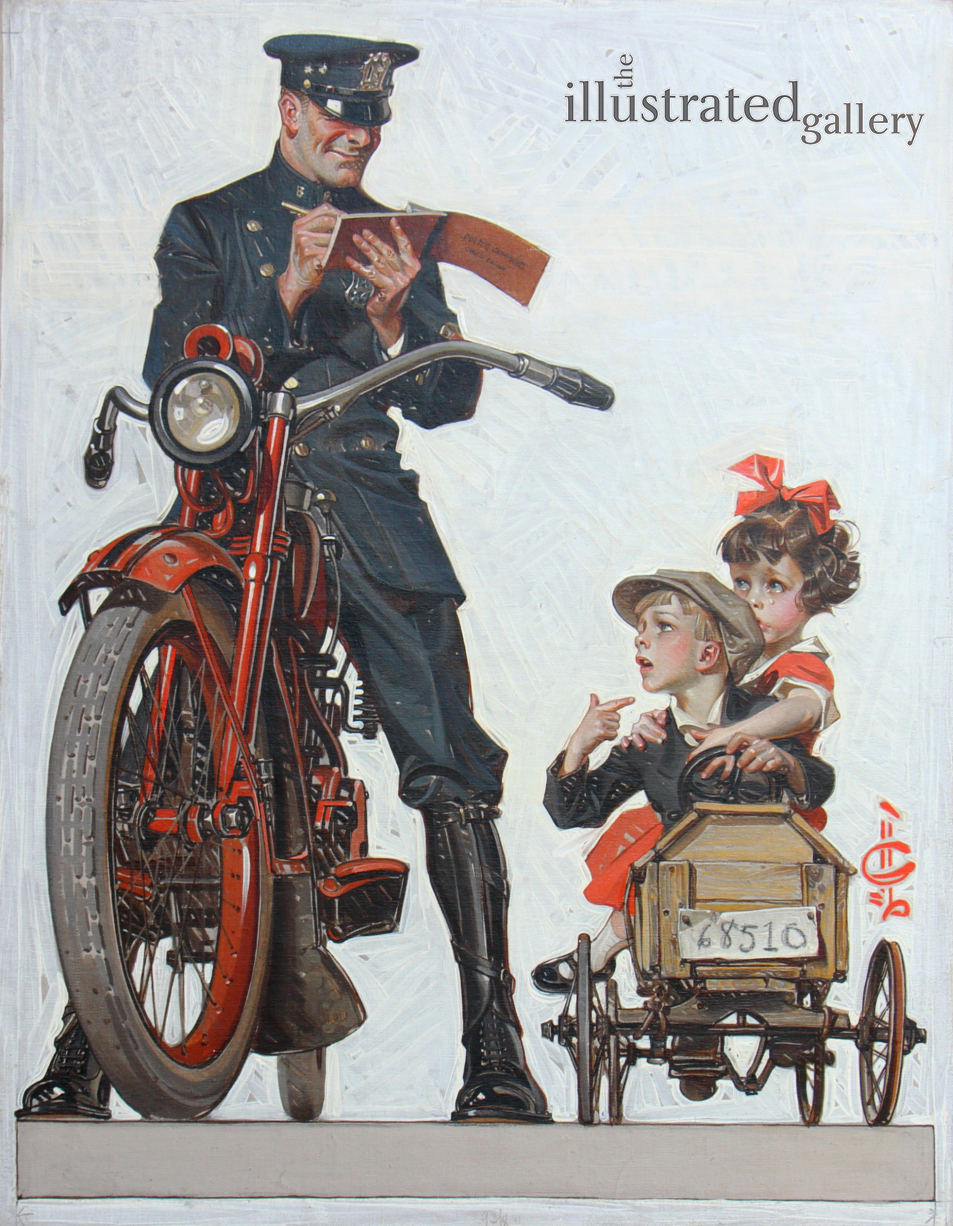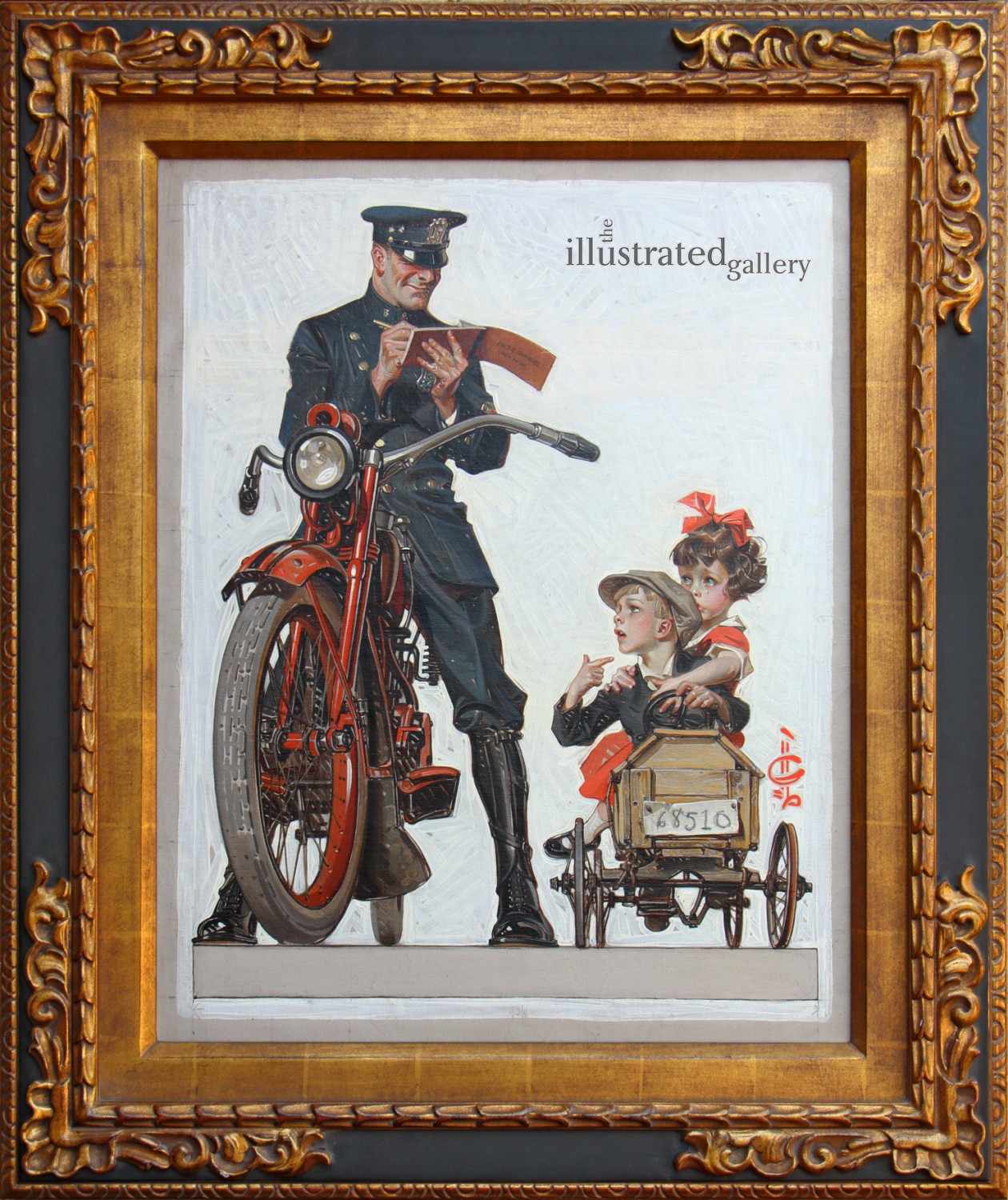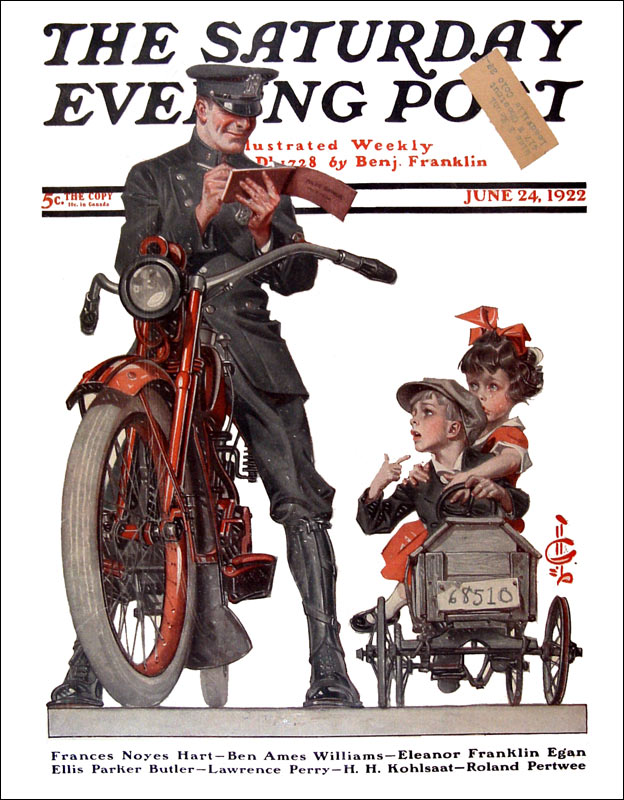"Traffic Stop, Saturday Evening Post Cover" Lot no. 3033
By Joseph Christian Leyendecker (1874-1951)
1922 (Estimated)
28.00" x 21.00", Framed 34.00" x 28.00"
Oil on Canvas
Signed Lower Right
SOLD
SOLD
Cover Illustration, The Saturday Evening Post, June 24, 1922
In this June 24, 1922 The Saturday Evening Post cover, J. C. Leyendecker has created a humorous drama of everyday life to engagingly evoke a long lost era, with two children in a soap box racer being given a ticket. The drama, such as it is, is a child’s version of an adult situation where she supplies the tears, and her escort provides the argument. Leyendecker’s crisply dashing style suits the figure of a motorcycle cop perfectly. It is a picture to which we respond just like the smile on the face of the cop.
Literature:
The Saturday Evening Post, June 24, 1922, illustrated on the cover
Michael Schau, J.C. Leyendecker, New York, 1974, illustrated p. 187
Laurence S. Cutler and Judy Goffman Cutler, J.C. Leyendecker: American Imagist, New York, 2008, illustrated p. 137
Explore related art collections: 1920s / Saturday Evening Post Covers / Magazine Covers / $100,000 & Above
See all original artwork by Joseph Christian Leyendecker
ABOUT THE ARTIST
Joseph Christian Leyendecker was born in Montabaur, Germany, and came to America at the age of eight. Showing an early interest in painting, he got his first job at 16 in a Chicago engraving house on the strength of some larger pictures he had painted on kitchen oilcloth. In the evenings after work, he studied under Vanderpoel at the Chicago Art Institute, and saved for five years to be able to go to France and attend the Academie Julian in Paris.
Upon his return, as a thoroughly trained artist with immense technical facility, Leyendecker had no difficulty in obtaining top commissions for advertising illustrations and cover designs for the leading publications. His first Post cover was done in 1899, and he did well over 300 more during the next 40 years. Among the most famous of these was his annual New Years Baby series.
His advertising illustrations made his clients famous. The Arrow Collar Man was a byword for the debonair, handsome male, and women wrote thousands of love letters to him in care of Cluett Peabody & Company. His illustrations for Kuppenheimer Clothes were equally successful in promoting an image of suited elegance. He was elected to the Society of Illustrators Hall of Fame in 1977.A major retrospective exhibition of Leyendecker's work was mounted at the Norman Rockwell Museum in Stockbridge, Massachusetts, in 1997-98.
Joseph Christian Leyendecker was born in Montabaur, Germany, and came to America at the age of eight. Showing an early interest in painting, he got his first job at 16 in a Chicago engraving house on the strength of some larger pictures he had painted on kitchen oilcloth. In the evenings after work, he studied under Vanderpoel at the Chicago Art Institute, and saved for five years to be able to go to France and attend the Academie Julian in Paris.
Upon his return, as a thoroughly trained artist with immense technical facility, Leyendecker had no difficulty in obtaining top commissions for advertising illustrations and cover designs for the leading publications. His first Post cover was done in 1899, and he did well over 300 more during the next 40 years. Among the most famous of these was his annual New Years Baby series.
His advertising illustrations made his clients famous. The Arrow Collar Man was a byword for the debonair, handsome male, and women wrote thousands of love letters to him in care of Cluett Peabody & Company. His illustrations for Kuppenheimer Clothes were equally successful in promoting an image of suited elegance. He was elected to the Society of Illustrators Hall of Fame in 1977.A major retrospective exhibition of Leyendecker's work was mounted at the Norman Rockwell Museum in Stockbridge, Massachusetts, in 1997-98.
Kent Steine





